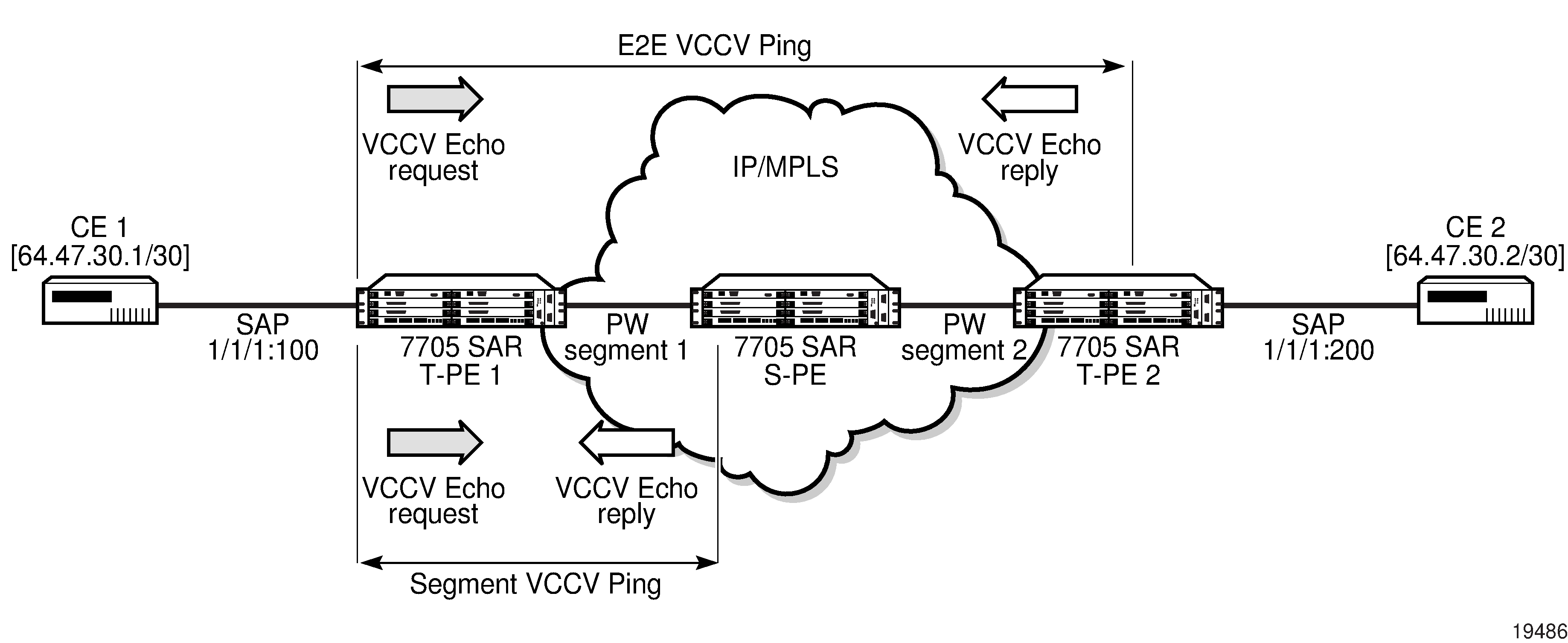Figure: VCCV Ping Over a Multi-Segment Pseudowire displays an example of an application of VCCV ping over a multi-segment pseudowire (MS-PW). Pseudowire switching provides the user with the ability to create a VLL service by cross-connecting two spoke SDPs.

In the network, a Termination PE (T-PE) is where the pseudowire originates and terminates. The Switching PE (S-PE) is the node that performs pseudowire switching by cross-connecting two spoke SDPs.
VCCV ping on the 7705 SAR is capable of performing VCCV ping to a destination PE. A VLL FEC ping is a message sent by T-PE1 to test the FEC at T-PE2. The operation at T-PE1 and T-PE2 is the same as in the case of a single-segment pseudowire. The 7705 SAR pseudowire switching node, S-PE1, pops the outer label, swaps the inner (VC) label, decrements the TTL of the VC label, and pushes a new outer label. The 7705 SAR S-PE1 node does not process the VCCV OAM control word unless the VC label TTL expires. If the VC label TTL expires, the message is sent to the CSM for further validation and processing. This is the method described in draft-hart-pwe3-segmented-pw-vccv.
The originator of the VCCV ping message does not need to be a T-PE node; it can be an S-PE node. The destination of the VCCV ping message can also be an S-PE node. When an S-PE node receives a VCCV ping echo request destined for itself, it sends an IP-routed reply. VCCV trace can trace the entire path of a pseudowire with a single command issued at the T-PE. This is equivalent to LSP trace and is an iterative process, where T-PE1 sends successive VCCV ping messages while incrementing the TTL value, starting from TTL=1.
The procedure for each iteration is the same. Each node in which the VC label TTL expires checks the FEC and replies with the FEC to the downstream S-PE or T-PE node. The process is terminated when the reply is sent from the T-PE2 node or when a timeout occurs.